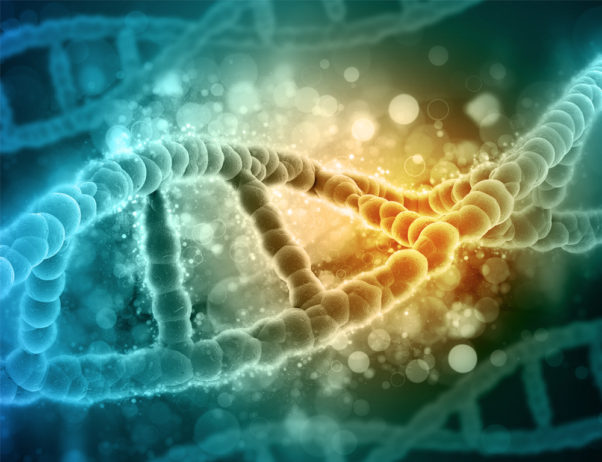Reduce the Likelihood of Developing Cancer
There are many factors that determine your likelihood of developing cancer, including age, genetic predisposition and lifestyle.

While many factors that determine your likelihood of developing cancer, like age, cannot be controlled, you can help prevent cancer by learning your family’s medical history and living a healthy lifestyle. (Photo: Penn State)
Some factors, like age, cannot be controlled, so experts recommend learning as much as possible about your family’s medical history and doing everything you can to live a healthy lifestyle. “Sometimes our environment may not be within our control, but we can make positive lifestyle changes,” said Maria Baker, professor of medicine in the Division of Hematology/Oncology at the Penn State Cancer Institute.
The elements that define healthy lifestyle change from year to year, but Baker said the current recommendations are to get at least 30 minutes of aerobic activity five times a week and incorporate weight-bearing exercises. Other suggestions include following a diet low in fat and high in fiber with lots of fruits and vegetables, as well as limiting alcohol consumption. Maintaining a healthy weight for your age and height, not smoking and limiting sun exposure are also recommended.
“These are the things we hear about again and again,” she said.
Genetic testing is not recommended for everyone to determine your predisposition to certain types of cancer. “It’s up to the individual and the health care provider to gather family and personal history and determine how to tailor screening recommendations,” Baked explained. “You should talk with relatives before that information is lost forever because knowledge is power.”

You should discuss your family medical history with your physician, since they probably haven’t treated your family as in the past. (Photo: Alamy)
Baker urges patients to be their own advocates because fewer people have a single primary-care physician following them through the years. “Today, there is turnover of providers and you may seek care in more than one place, so they may not get to know you or your family as well,” she said. “Because of that, it’s important to be a more engaged participant.”
Dr. Sarah Ines Ramirez, a family medicine physician at Penn State Medical Group, said primary care doctors are on the front lines of prevention. “I am always reviewing the medical chart and asking questions,” she said.
She recommends that physicians take time to “look behind the scenes” and ask about a patient’s lifestyle, occupation, habits, where and with whom do they live, check which screenings are completed and discuss any new developments in the family or personal medical history.
Though they may not be hot topics of conversation for most patients, discussing smoking habits, alcohol consumption, menstrual patterns and body-mass index give providers important information that may result in screenings that could prevent or catch cancers at an early stage. Someone who never smoked may be at risk for lung cancer because of exposure to secondhand smoke.
Ramirez highlights the importance of physicians familiarizing themselves with cancer disparities that may exists in the populations they serve. For example, while the rates of cervical cancer are highest in Latin women, African Americans are more likely to die from it. She also notes that African-American women with breast cancer often have more aggressive forms of the disease at diagnosis.
“There is a value in really knowing your patients,” she said.
Ramirez added that those who don’t have a regular doctor can take charge of things themselves simply by collecting the family health history, asking their provider if they are due for preventative treatments and sharing as much information as possible. “If you are worried or have a concern, don’t be afraid to ask questions of your physician.”
Article by Penn State Health Milton S. Hershey Medical Center




